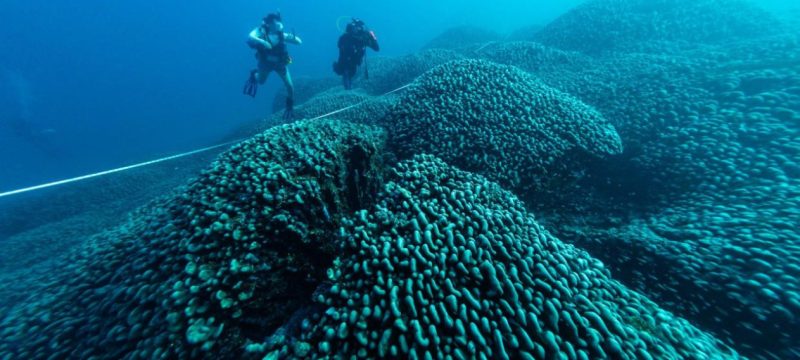A team of scientists has discovered the world’s largest known coral, a massive Pavona clavus, in the waters off the Solomon Islands. This vibrant coral, which can be seen from space, measures an astounding 183 meters (600 feet) in circumference and is estimated to be between 300 and 500 years old. It stretches 34 meters (112 feet) in width, 32 meters (105 feet) in length, and rises over 5 meters (16 feet) in height.
The discovery was made during an expedition by the National Geographic Pristine Seas team in the Pacific’s “Coral Triangle,” an area famed for its rich marine biodiversity. Unlike the typical multi-colony coral reefs, this solitary coral organism has grown uninterrupted over centuries. It provides habitat for a diverse range of marine species, including fish, shrimp, and crabs, which live within its polyps.
Also Read: Second-Largest Diamond in the World Discovered in Botswana
Marine ecologist Enric Sala, who led the expedition, called the find a “significant scientific breakthrough,” comparing it to the discovery of the “world’s tallest tree.” The coral’s size, age, and isolated growth make it an extraordinary find, as Pavona clavus usually grows to just 2 to 3 meters across. This coral began from a single larva on the seabed and has since multiplied into millions of genetically identical polyps.
The coral’s stunning colors—brown with vibrant streaks of yellow, blue, and red—set it apart in the surrounding ocean. However, despite its remote location, it is vulnerable to global warming and other human impacts. Sala emphasized the need for conservation efforts to protect this ancient and thriving organism.
Scientists initially mistook the coral for a shipwreck, only identifying it as Pavona clavus after diving 12 meters to examine it. Local fishers had overlooked it, likely thinking it was just a large boulder. The coral’s discovery is especially significant for the Solomon Islands, where marine ecosystems are integral to local culture and livelihoods. Ronnie Posala, a fisheries officer from the Solomon Islands Ministry of Fisheries, described the find as “monumental” and stressed the importance of protecting the region’s natural treasures.
The coral’s remarkable resilience in the face of environmental changes offers hope for coral conservation. Despite the degradation of shallow reefs due to rising sea temperatures, this deep-water coral has remained healthy. Scientists hope its survival may provide insights into how coral species can adapt to changing conditions, potentially aiding in the restoration of damaged reefs worldwide.
Eric Brown, a coral scientist on the expedition, highlighted the coral’s significance as a beacon of hope for conservation efforts. He praised the efforts of local communities to establish conservation zones to protect the area. Nevertheless, scientists warn that even this remote coral is not immune to threats from ocean warming and pollution, underscoring the need for continued global efforts to protect coral reefs.









